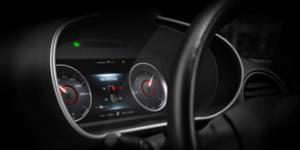AP3, which used to produce iPhone LCD panels, focuses on automotive panels in the future

LG Display has stopped producing liquid crystal display (LCD) panels for the Apple iPhone. The production line that used to make iPhone LCD panels is expected to be converted to use in vehicle displays.
According to the industry on the 20th, LG Display was found to have stopped producing LCD panels for Apple iPhones in the third quarter of last year. LG Display has been making iPhone LCD panels at the AP3 production line in Gumi, Gyeongbuk. The production line also stopped producing the remaining mobile displays in the fourth quarter of last year. AP3 is expected to focus on vehicle displays in the future.
For LG Display, the iPhone LCD panel was a business that had low profitability. Since last year, all of the new Apple iPhone (iPhone 12) series use organic light-emitting diode (OLED) panels, and from this year, the total OLED iPhone shipments are expected to significantly outperform LCD iPhones, so LG Display seems to have stopped producing iPhone LCD panels.
The iPhone SE, an LCD model released in the first half of last year, and the upcoming LCD iPhone panels will be produced by Japanese JDI and Sharp (acquired by Foxconn, Taiwan). LG Display also tried to supply LCD panels for iPhone SE in 2019, when the company was particularly difficult, but it failed.

LG Display plans to continue producing vehicle displays at AP3, such as converting its production line from iPhone LCD panels to vehicles.
Among automotive displays, AP3 produces LCD panels that apply low-temperature polycrystalline silicon (LTPS) thin-film transistors (TFTs). TFT is a component that turns the display screen on and off and controls pixels.
The LTPS type TFT is more advantageous in realizing a large screen than the amorphous silicon (a-Si) type TFT, which has been the main market player in the past. The a-Si method was mainly used for 7~8 inch navigation products, but there is a limit to technology expansion. LCD displays for vehicles over 20 inches, which have recently been expanding, mainly use LTPS type TFTs.
The LTPS method supports the In-Cell method, which has high charge mobility and embeds touch technology into the display. In-cell technology can make the panel thinner and has better visibility than the add-on method that a-SI method uses to implement touch. In the add-on method, a touch screen panel (TSP) must be attached to the display. LG Display’s a-Si type LCD panel is produced by P5 (Gumi). Automotive OLED panels are produced by Gumi E5.
LG Display is expected to gradually reduce the size of the a-Si business, which China’s BOE and Taiwanese AUO are aggressive in. In terms of existing vehicles, the a-Si type LCD panel market share is high, but the LTPS LCD panel market share is known to be high by new products. However, due to the characteristics of automobile replacement cycles that are used for several years once purchased, it will take time to increase the penetration rate of LTPS type LCD panels.
According to market research firm Omdia, LG Display (24.9%) ranked No. 1 in shipments in the 9-inch or larger vehicle display market in the third quarter of last year. 2nd place JDI (14.6%), 3rd place BOE (13.9%), 4th place Tianma (9.8%), 5th place AUO (8.9%).
Copyright © The Elec, the electronic component specialty media Unauthorized reproduction and redistribution prohibited
